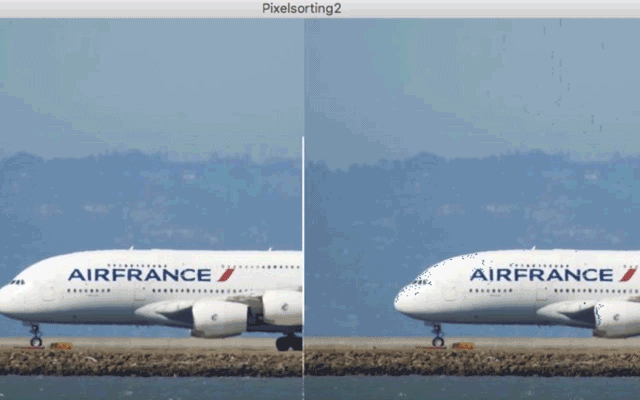Difference between revisions of "User:Tom"
m |
m |
||
| Line 10: | Line 10: | ||
{|style="margin: 0 auto;" | {|style="margin: 0 auto;" | ||
| − | |[[File:Examplesort1.jpg]] | + | |[[File:Examplesort1.jpg|120x60px]] |
| − | |[[File:Examplesort2.jpg]] | + | |[[File:Examplesort2.jpg|120x60px]] |
| − | |[[File:Examplesort3.jpg]] | + | |} |
| − | |[[File:Examplesort4.jpg]] | + | {|style="margin: 0 auto;" |
| + | |[[File:Examplesort3.jpg|120x60px]] | ||
| + | |[[File:Examplesort4.jpg|120x60px]] | ||
|} | |} | ||
Revision as of 17:43, 2 February 2018
Project (WORK IN PROGRESS)
I ran into a couple of gifs that visualised how certain sorting algorithms worked. Normally I don’t understand algorithms, but these visualisations made it so easy and insightful to understand what is going on. Besides that I think it’s cool to see an algorithm at work like this, I also think it has some artistic value. You could call it Glitch Art.
These are some examples of different codes working on a color palette:
It is a code creating a new kind of image by rearranging the original. This results in an image made anonymous. Or maybe more like a vague memory, where everything is still there but over time you start to forget what it looks like. This creates a new memory, a distorted version of the original.

|

|

|

|
What is Pixel Sorting?
Pixel Sorting is done with a program called Processing. It takes the pixels in a digital image and places them into a semblance of order. Pixel sorting was made popular by an artist of the name Kim Asendorf. He began sorting by developing a code in Processing.
Experiment
This is a modified version of the code written bij Kim Asendorf. It is written in Processing language, and requires a folder called ‘data’ in the same location as the .pde processing file. I used it to experiment with different images to discover what would happen.
PImage img;
PImage sorted;
int index = 0;
void setup() {
size(800, 400);
img = loadImage("afbeelding.jpg");
sorted = createImage(img.width, img.height, RGB);
sorted = img.get();
}
void draw() {
println(frameRate);
sorted.loadPixels();
// Selection sort!
for (int y = 0; y < sorted.height; y++) {
float record = -1;
int selectedPixel = index;
for (int x = index; x < sorted.width; x++) {
int loc = y * sorted.width + x;
color pix = sorted.pixels[loc];
float b = brightness(pix);
if (b > record) {
selectedPixel = loc;
record = b;
}
}
// Swap selectedPixel with i
color temp = sorted.pixels[y * sorted.width + index];
sorted.pixels[y * sorted.width + index] = sorted.pixels[selectedPixel];
sorted.pixels[selectedPixel] = temp;
}
if (index < sorted.width -1) {
index++;
} else {
save("sorted.jpg");
frameRate(0);
}
sorted.updatePixels();
background(0);
image(img, 0, 0);
image(sorted, 400, 0);
}
The code results in a pixel sorting visualisation:
